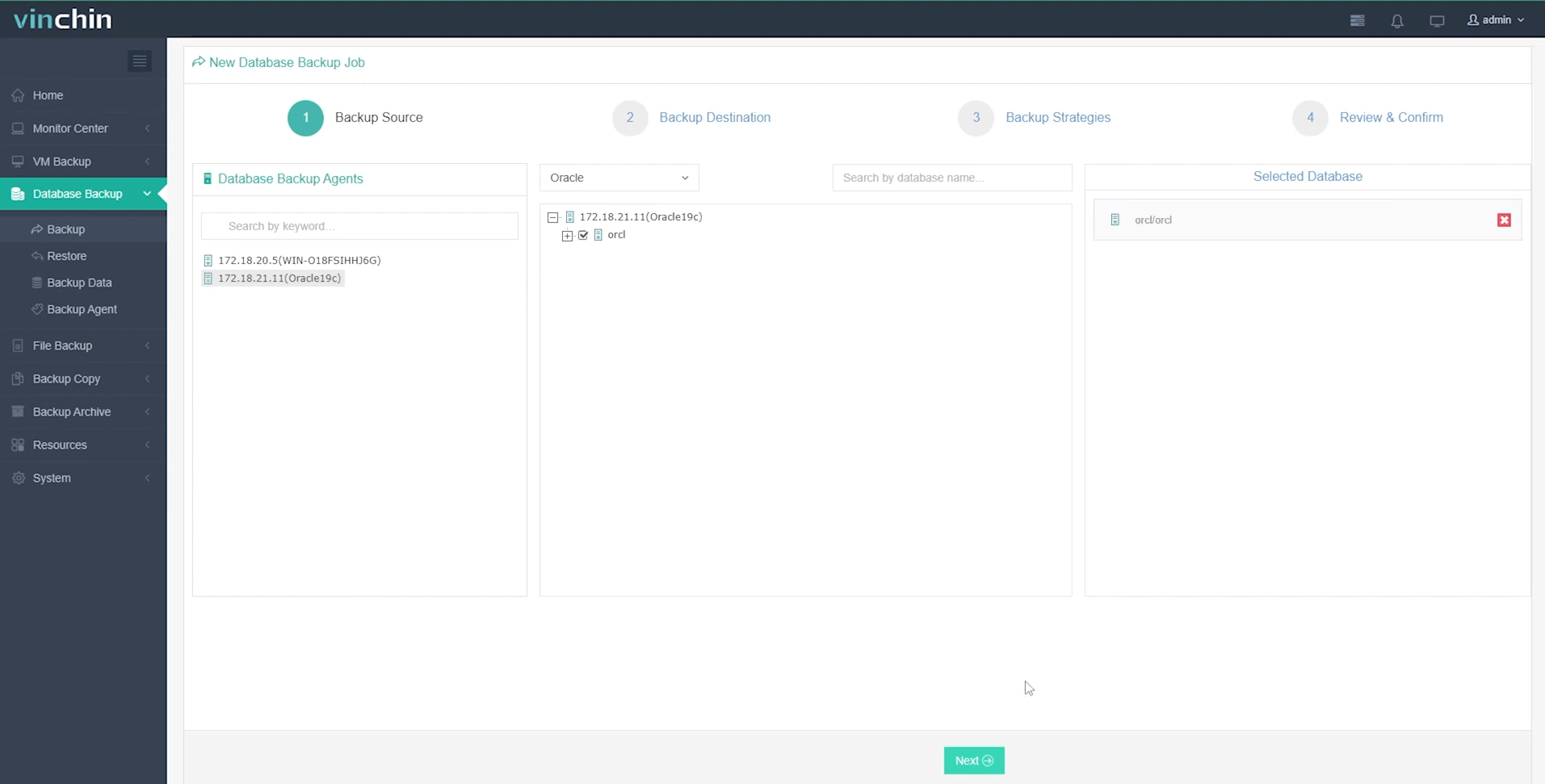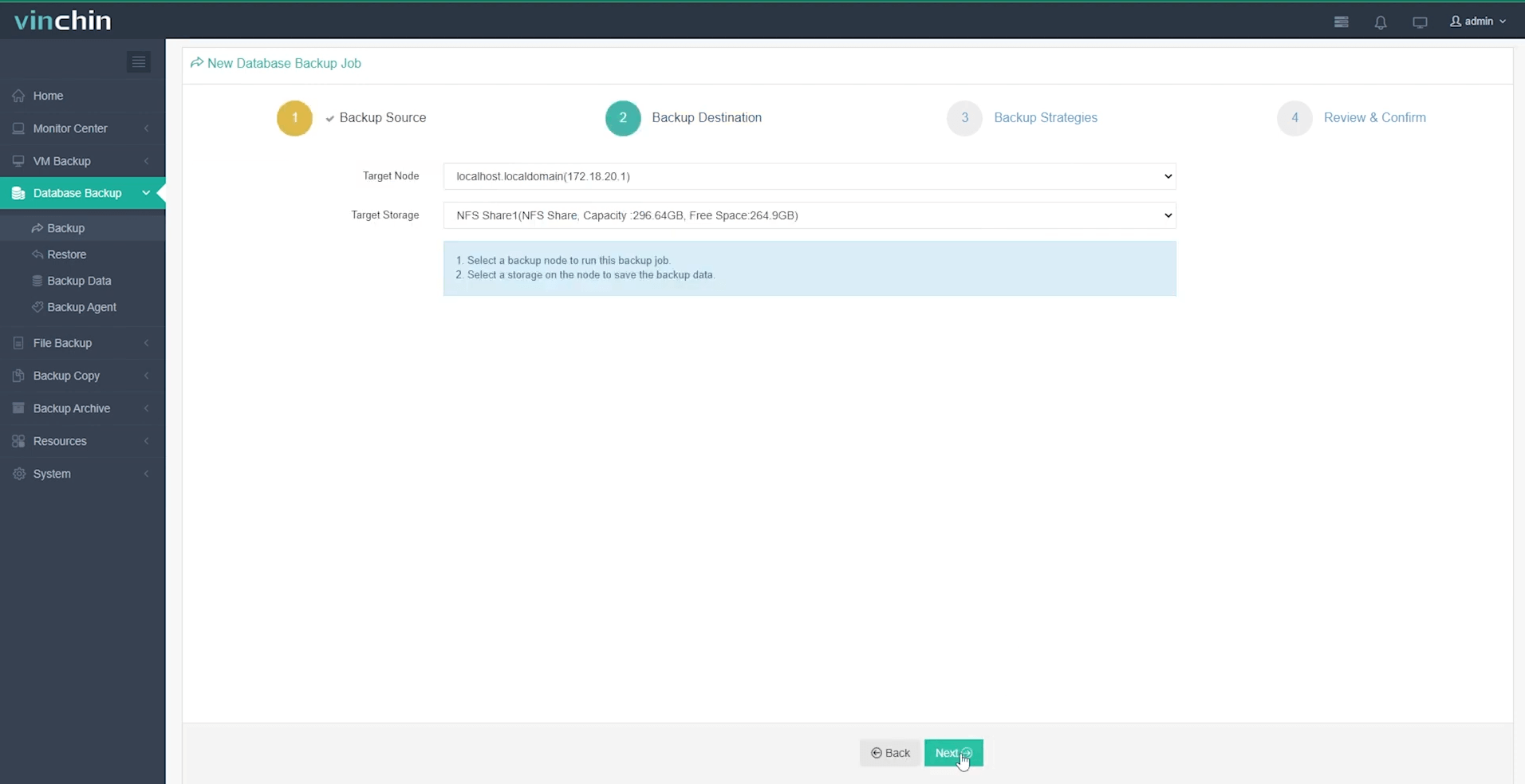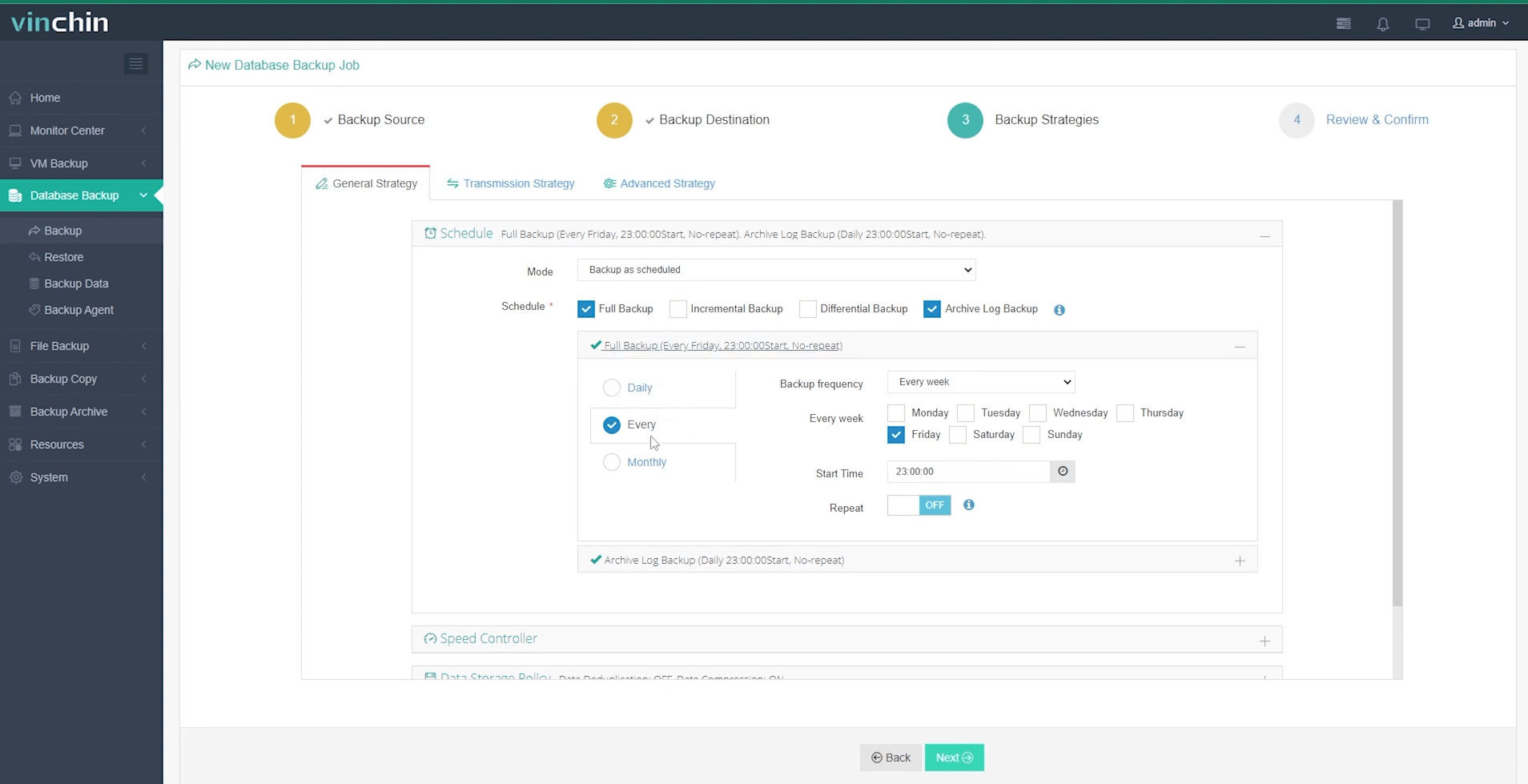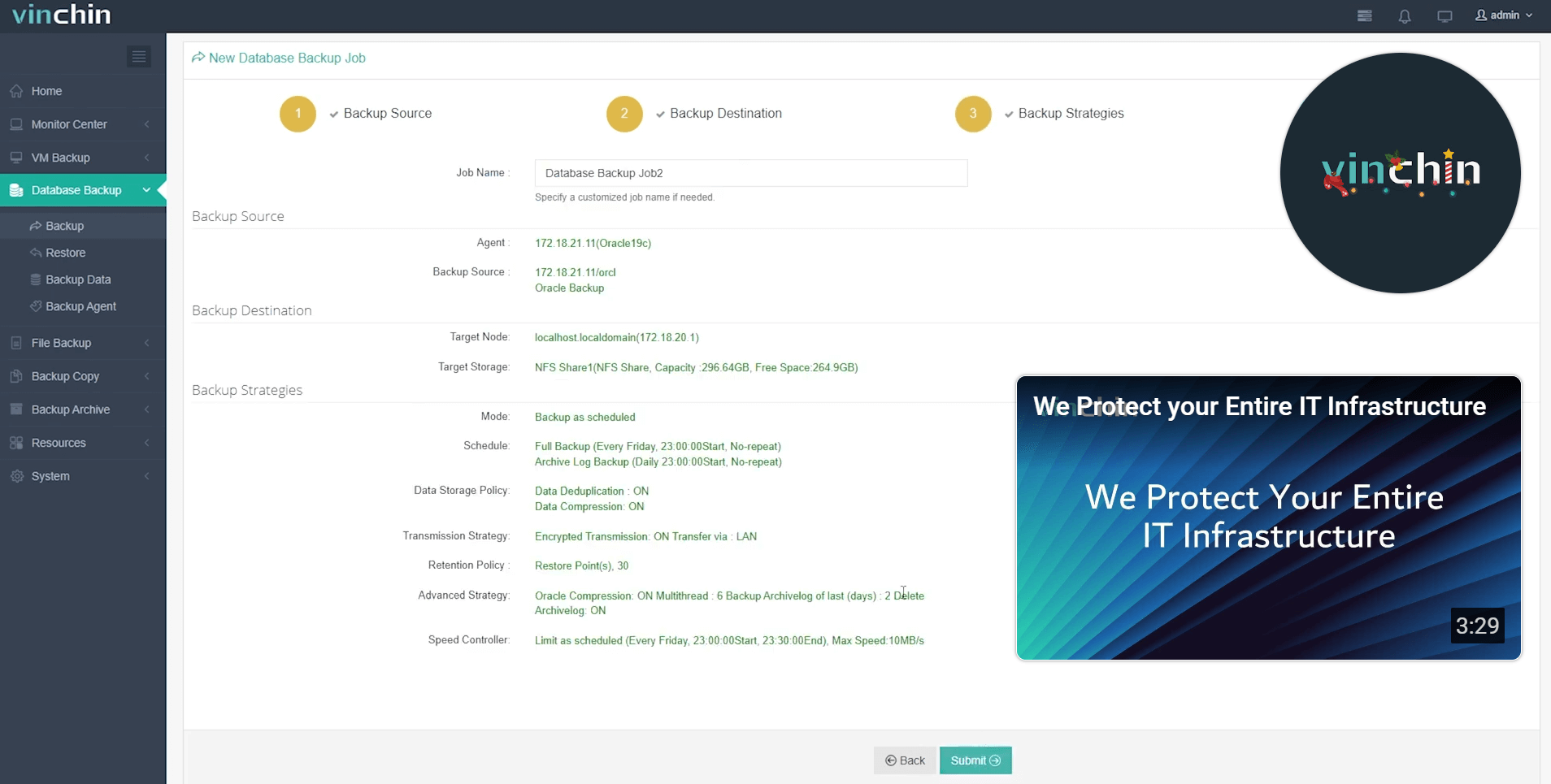-
What Is RMAN Table Recovery?
-
Why Use RMAN to Recover Tables?
-
How to Recover a Table Using Data Pump and RMAN
-
How to Recover a Table Using an Auxiliary Database?
-
Protecting Your Oracle Database with Vinchin Backup & Recovery
-
RMAN Recover Table FAQs
-
Conclusion
Losing a table in Oracle can be stressful. Maybe someone dropped it by mistake, or a batch job corrupted the data. You need a way to recover just that table—without rolling back the whole database. That’s where RMAN table recovery comes in handy.
This guide explains what RMAN table recovery is, why it matters, and how you can use it step by step—from beginner basics through advanced techniques.
What Is RMAN Table Recovery?
RMAN table recovery is an Oracle database feature (available since 12c) that lets you restore one or more tables or partitions to a specific point in time using RMAN backups. Unlike full database restores, this process targets only the tables you specify while leaving other data untouched.
RMAN automates much of this work by creating a temporary auxiliary database behind the scenes. It recovers your target tables there and then imports them back into your main database using Data Pump technology. This approach saves time and reduces downtime compared to traditional methods.
Why Use RMAN to Recover Tables?
Recovering a table with RMAN is often the best choice when you need to restore just one or several tables without affecting others. For example, if someone drops or truncates a critical table—or if corruption strikes—and Flashback Table isn’t possible (maybe because undo data is gone), RMAN gives you another chance.
Unlike tablespace point-in-time recovery (TSPITR), which affects all objects within a tablespace, RMAN lets you recover exactly what you need at precisely the right moment.
You might wonder: do all situations call for this? Not always—but when granular precision matters most, nothing beats targeted table-level recovery.
How to Recover a Table Using Data Pump and RMAN
Restoring individual tables with Data Pump and RMAN is common practice among DBAs who want control over what gets imported back into production databases.
Prerequisites for Table Recovery
Before starting any recovery operation:
Ensure your database runs in ARCHIVELOG mode.
Confirm valid RMAN backups exist for all relevant tablespaces—including SYSTEM, SYSAUX, and UNDO.
Verify backup integrity using
RMAN VALIDATE BACKUPcommands.Make sure there’s enough disk space at your chosen auxiliary destination; running out of space will halt recovery.
Check user permissions: connect as SYSDBA or SYSBACKUP roles only.
Step-by-Step Guide with Data Pump
Let’s walk through each stage:
1. Plan Your Recovery
Pinpoint exact names of affected tables/partitions.
Decide on point-in-time (timestamp/SCN/log sequence).
Choose locations for both auxiliary database files and Data Pump dump files.
2. Start Up RMAN
Open terminal
Enter:
rman target /
3. Run RECOVER TABLE Command
Example command:
RECOVER TABLE HR.PAYROLL
UNTIL TIME "TO_DATE('2024-06-01 10:00:00', 'YYYY-MM-DD HH24:MI:SS')"
AUXILIARY DESTINATION '/tmp/oracle/recover'
DATAPUMP DESTINATION '/tmp/recover/dumpfiles'
DUMP FILE 'payroll_exp_dump.dat'
NOTABLEIMPORT;Here,
AUXILIARY DESTINATION sets where temporary files go—ensure ample free space!
DATAPUMP DESTINATION plus DUMP FILE define export file location/name.
NOTABLEIMPORT means recovered data won’t be auto-imported yet.
4. Import Recovered Table Manually
Use Data Pump Import utility:
impdp system/password DIRECTORY=dpdir DUMPFILE=payroll_exp_dump.dat
Replace dpdir with directory object pointing at dump file path.
5. Verify Success
Query restored table(s) to confirm row counts match expectations.
Run sample queries on key columns/data points as needed.
How to Recover a Table Using an Auxiliary Database?
Sometimes you want everything handled automatically—or maybe you need recovered data under new names/tablespaces/schemas without manual intervention from Data Pump utilities.
Here’s how Oracle makes that possible:
Automatic Recovery and Import Process
When using this method:
1. Plan which tables require restoration; decide whether they’ll keep their original names/locations or move elsewhere via remapping options.
2. Start up RMAN as usual:
rman target /
3. Issue RECOVER TABLE command leveraging advanced clauses like REMAP TABLE/TABLESPACE/SCHMEA:
RECOVER TABLE HR.STAFF
UNTIL TIME "TO_DATE('2024-05-30 15:45:00', 'YYYY-MM-DD HH24:MI:SS')"
AUXILIARY DESTINATION '+RECO'
REMAP TABLE 'HR'.'STAFF':'HR'.'STAFF_RESTORED';Here,
REMAP TABLEavoids name collisions by restoring under new identifiers.To change schema instead (Oracle 12.2+):
REMAP TABLE 'HR'.'STAFF':'FINANCE'.'STAFF_BACKUP';
To move recovered data into another tablespace:
REMAP TABLESPACE USERS_NEW;
4. Let Oracle handle everything else—it spins up an isolated auxiliary environment behind-the-scenes so production workloads aren’t interrupted during extraction/import phases!
5. Once complete,
Validate presence/content of newly created/restored objects via SQL queries (
SELECT COUNT(*) FROM ...) or comparison scripts.
Optimizing Performance for Large Tables
Recovering large datasets can strain resources if not planned well:
Estimate required disk space ahead of time based on source object size; allocate extra buffer room at auxiliary destinations whenever possible.
For high-throughput environments, direct recovered output onto fast SSD/NVMe storage rather than slower spinning disks—this minimizes total elapsed time during extract/import cycles.
If recovering multiple large objects simultaneously across schemas/tablespaces/PDBs (pluggable databases), stagger jobs sequentially rather than concurrently unless hardware supports parallelism robustly.
Example for Pluggable Databases (PDB)
For multi-tenancy setups:
RECOVER TABLE SALES.PDB_ORDERS OF PLUGGABLE DATABASE SALES_PDB UNTIL TIME 'SYSDATE-3' AUXILIARY DESTINATION '/mnt/pdb_backups' REMAP TABLE 'SALES'.'PDB_ORDERS':'ORDERS_RECOVERED';
This isolates PDB-specific operations from CDB-wide activities.
Protecting Your Oracle Database with Vinchin Backup & Recovery
Beyond native tools like RMAN, organizations increasingly rely on comprehensive solutions for enterprise-grade protection of their Oracle environments. Vinchin Backup & Recovery stands out as a professional solution supporting today’s mainstream databases—including Oracle, MySQL, SQL Server, MariaDB, PostgreSQL, PostgresPro, and MongoDB—with robust features tailored for mission-critical workloads such as yours.
Among its many capabilities are incremental backup strategies optimized for Oracle databases; batch database backup management; flexible retention policies including GFS retention; ransomware protection; and seamless cloud backup integration—all designed to maximize efficiency while minimizing risk and downtime across complex infrastructures.
The intuitive web console streamlines every operation into four straightforward steps:
Step 1: Select the Oracle database to back up

Step 2: Choose your preferred backup storage

Step 3: Define a tailored backup strategy

Step 4: Submit the job

Recognized globally with top ratings from thousands of enterprise users worldwide, Vinchin Backup & Recovery offers a fully featured 60-day free trial—click below to experience leading-edge data protection firsthand!
RMAN Recover Table FAQs
Q1: Can I use RMAN recover table if my backup retention policy has already deleted older backups?
No—you must have valid backups covering the desired point-in-time; expired/deleted images cannot be used by RMAN's recover features.
Q2: What should I do if my recovered table contains unsupported datatypes?
Tables containing certain datatypes (e.g., XMLType prior to 19c) may not be eligible; consult Oracle documentation for supported types before attempting restore operations.
Q3: How do I estimate required disk space at my AUXILIARY DESTINATION?
Check source object sizes using DBA_TABLES/BLOCKS views; add overhead (~20–30%) since temporary redo/system files will also be generated during extraction/import phases.
Conclusion
RMAN recover table empowers DBAs with precise control over lost/corrupted data restoration while minimizing impact elsewhere in production systems—for even greater protection consider Vinchin Backup & Recovery alongside native tools like these so you're ready no matter what happens next!
Share on:






